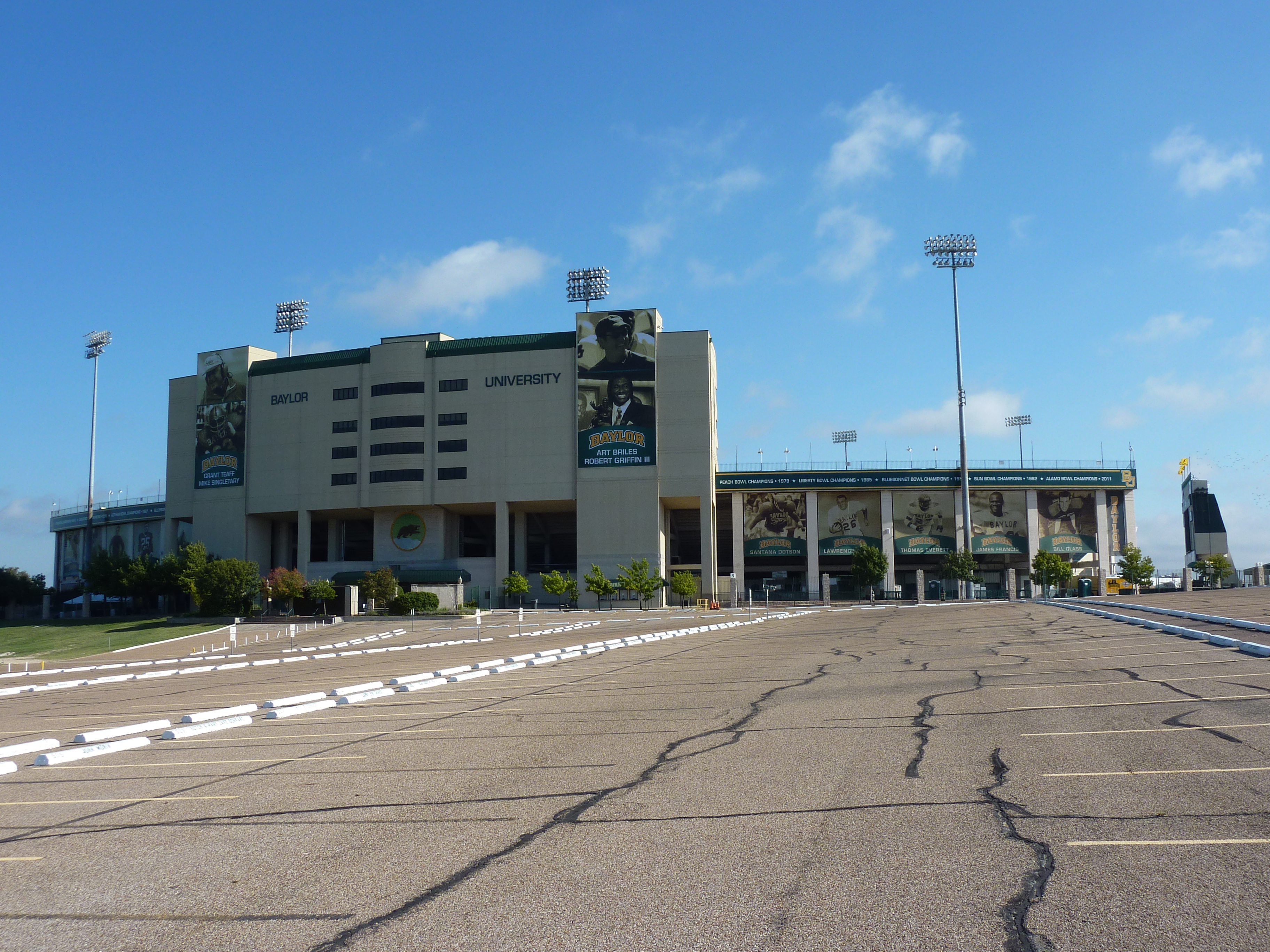Floyd Casey Stadium on:
[Wikipedia]
[Google]
[Amazon]
Floyd Casey Stadium was a 

stadium
A stadium ( : stadiums or stadia) is a place or venue for (mostly) outdoor sports, concerts, or other events and consists of a field or stage either partly or completely surrounded by a tiered structure designed to allow spectators to stand o ...
in Waco, Texas. The stadium was used for 64 seasons before being replaced by McLane Stadium in 2014. It was primarily used for football
Football is a family of team sports that involve, to varying degrees, kicking a ball to score a goal. Unqualified, the word ''football'' normally means the form of football that is the most popular where the word is used. Sports commonly c ...
, and was the home field of the Baylor Bears
The Baylor Bears are the athletic teams that represent Baylor University. The teams participate in Division I of the National Collegiate Athletic Association (NCAA) as one of only two private school members of the Big 12 Conference. Prior to j ...
. The stadium, located about four miles from the Baylor University campus, cost $1.8 million to build and sat 50,000 people. Originally named Baylor Stadium, it opened in 1950 with a Baylor game against the Houston Cougars
The Houston Cougars are the athletic teams representing the University of Houston. Informally, the Houston Cougars have also been referred to as the Coogs, UH, or simply Houston. Houston's nickname was suggested by early physical education instr ...
. On December 7, 2013, Baylor played its last game in the stadium, against the Texas Longhorns, where the attendance record of 51,728 was established. Baylor won 19 of its final 20 games played at the stadium.
Originally known as Baylor Stadium, the stadium was renamed at halftime of the November 5, 1988 homecoming game when it was renamed for Floyd Casey by his son, university trustee and longtime booster Carl B. Casey of Dallas, who gave US$5 million towards an $8 million stadium renovation project.
The stadium was renovated several times. Turf was first introduced to the stadium in 1972. Then in 1998, the stadium installed SportGrass, a leading artificial grass surface. In 2005, it underwent massive renovations to extend the Grant Teaff Plaza in honor of former head coach Grant Teaff. The extended plaza created much-needed updates to the stadium's façade.
The stadium was an elongated oval shape, running southeast-northwest, with large grandstands on the sidelines. The south end zone was cleared, with athletic marks painted on the ground and the large LED scoreboard behind it. (Prior to the creation of the current athletic marks, the area was painted gold, with "BAYLOR" painted in large green block letters.) In 2004, a large tarp was installed that covered the south end zone and could be removed when ticket demand necessitated it. With the tarp in place seating capacity was reduced to 47,000. The north end zone had seating in front of the Carl & Thelma Casey Athletic Center, site of the football offices, training facilities, and stadium field house.
Prior to the building of the stadium, the Baylor football team played at Carroll Field, an on-campus field last used in 1935, and Waco's Municipal Stadium on Dutton Avenue.
In the spring of 2012, Baylor regents approved a new on-campus stadium to be built on the Brazos River
The Brazos River ( , ), called the ''Río de los Brazos de Dios'' (translated as "The River of the Arms of God") by early Spanish explorers, is the 11th-longest river in the United States at from its headwater source at the head of Blackwater Dr ...
adjacent to Interstate 35.
The demolition of the stadium was completed on May 14, 2016.
College football attendance records
References
{{Baylor Bears football navbox Sports venues completed in 1950 Sports venues demolished in 2016 Baylor Bears football venues Sports venues in Waco, Texas American football venues in Texas 1950 establishments in Texas 2016 disestablishments in Texas Demolished sports venues in Texas Defunct college football venues